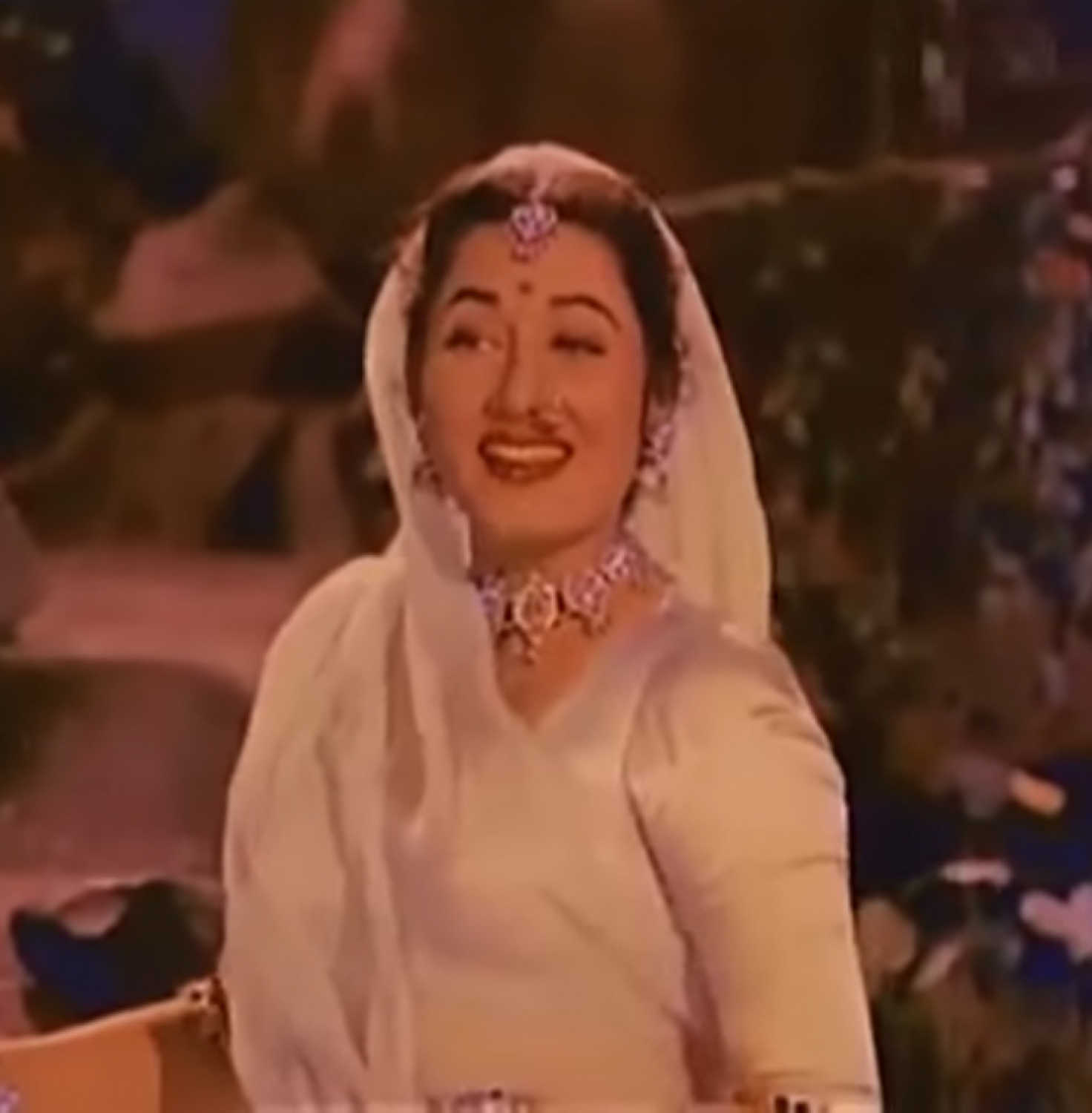The film, directed M Venkat Raman, portions of which were originally shot in the late 1950s, hit theatres two years after her death on 23 February 1969, 48 years ago.


Sonal Pandya
Dubbed the ‘Venus of the Indian Screen’ by Filmindia editor Baburao Patel, Madhubala had audiences and personalities within the film industry singing her praises. In the book I Want to Live: The Story of Madhubala by Khatija Akbar, actress Nirupa Roy had said, “There never was and never will be anyone with her looks,” while dancer-actress Minoo Mumtaz remembered, “Her complexion was so fair and translucent that when she ate a paan (betel leaf) you could almost see the red colour going down her throat.”
While Madhubala reigned supreme during the black-and-white era, the full effect of her beauty was experienced in two films — Mughal-E-Azam (1960) and Jwala (1970).
A portion of Mughal-E-Azam, around four reels, of which the song ‘Pyar Kiya To Darna Kya’ was a part of, was filmed in colour. The film became a classic and Madhubala’s performance as the doomed but defiant Anarkali goes down as one of the greatest in Indian cinema. Her only fully colour film became MV Raman’s Jwala (1970) co-starring Sohrab Modi, Sunil Dutt and Pran which used locations of the Samode Palace in Jaipur, Rajasthan.

Like Mughal-E-Azam, Raman’s film was long-in-the-making, from the late 1950s. And unlike K Asif’s masterpiece, it was a haphazard mess. With the story by Chandilyan and dialogues by Rajinder Singh Bedi, Jwala’s plot is all over the place. Set in the fictional kingdoms of Seema and Rampur, the ruler Anup Singh (Sohrab Modi) and his son Ajit (Sunil Dutt) are thought to be dead. Rampur’s king (Raj Mehra) takes over the kingdom of Seema and places his young son Kumar (who grows up to be Pran) and his evil minister Vikram (Ulhas) in charge.
Over the years, Vikram is the de facto leader as he controls the young prince Kumar with poisoned alcohol and women. But lurking in the shadows is Anup Singh who has waited over 18 years to take back his land. Ajit, on the other hand, has no idea of his parentage and become a high-ranking soldier in the Seema army due to his bravery.
There, Ajit meets and falls in love with ethereal princess Jwala (Madhubala), sister of Kumar. Like Anarkali, Jwala is unafraid of declaring her love for someone not in her rank. On top of the love story, there is a vague threat of foreigners possibly invading the two kingdoms. And cruelly, wild animals like elephants and leopards are paraded about the film. Eventually, Anup, Ajit and later Kumar come together to defeat Vikram and restore balance in the land.

However, in this film, despite being the title character, Madhubala is pushed to the background. This could be attributed to the fact that she stopped accepting film roles in the mid-1960s and wasn’t around to shoot for the film. For a few scenes and notably in the finale, a double was used to stand in her place.
Madhubala was diagnosed with a ventricular septal defect in her heart in 1954 and by 1960, she married actor-singer Kishore Kumar, but returned home within a month. She lived on in great pain from her condition until February 1969 when she passed away nine days after her birthday which falls on Valentine’s Day (14 February).

was supposed to be directed by Madhubala.
We never got to see what she would have done to top her role in Mughal-E-Azam. She was supposed to direct a film called Farz Aur Ishq but that too, lay unfinished. Other actresses like Nargis retired eventually and others like Nutan and Waheeda Rehman continued acting as they aged. But Madhubala remained forever young onscreen, for us.

